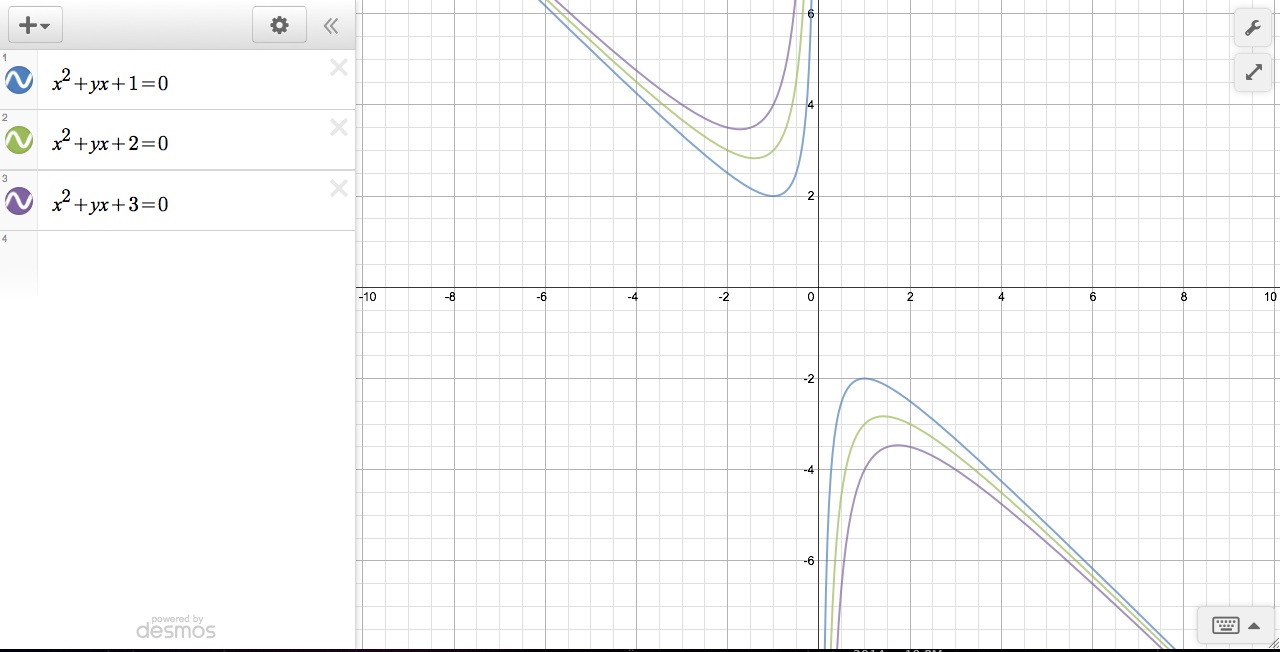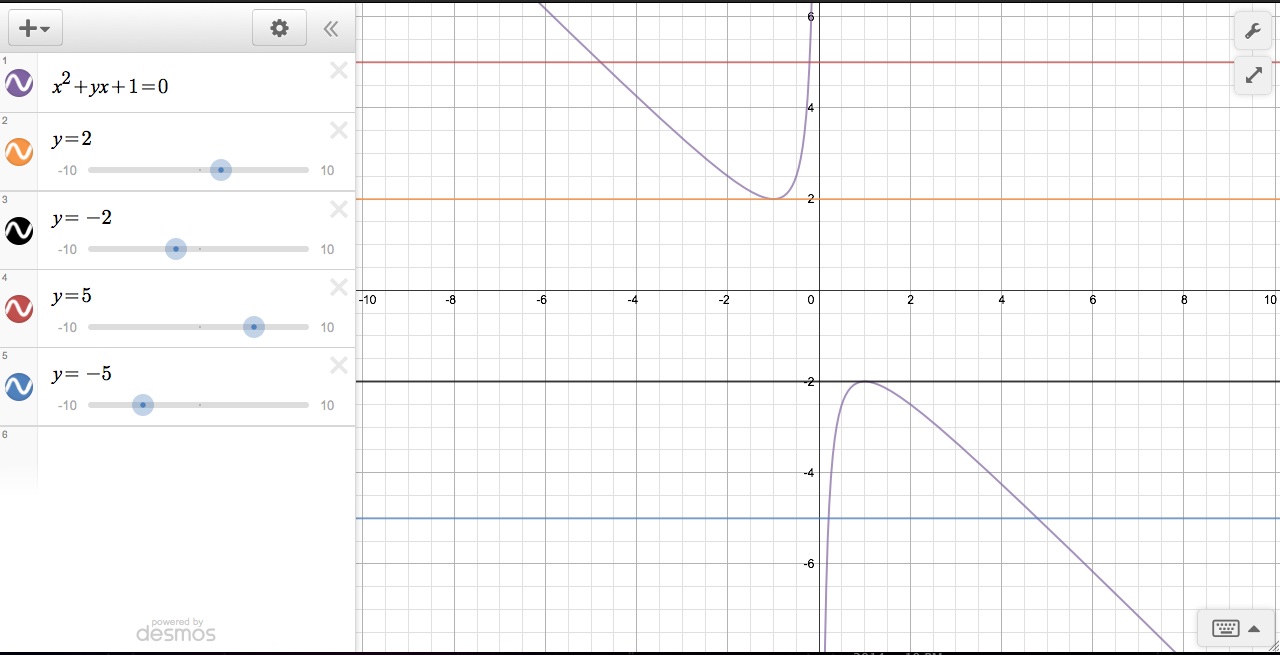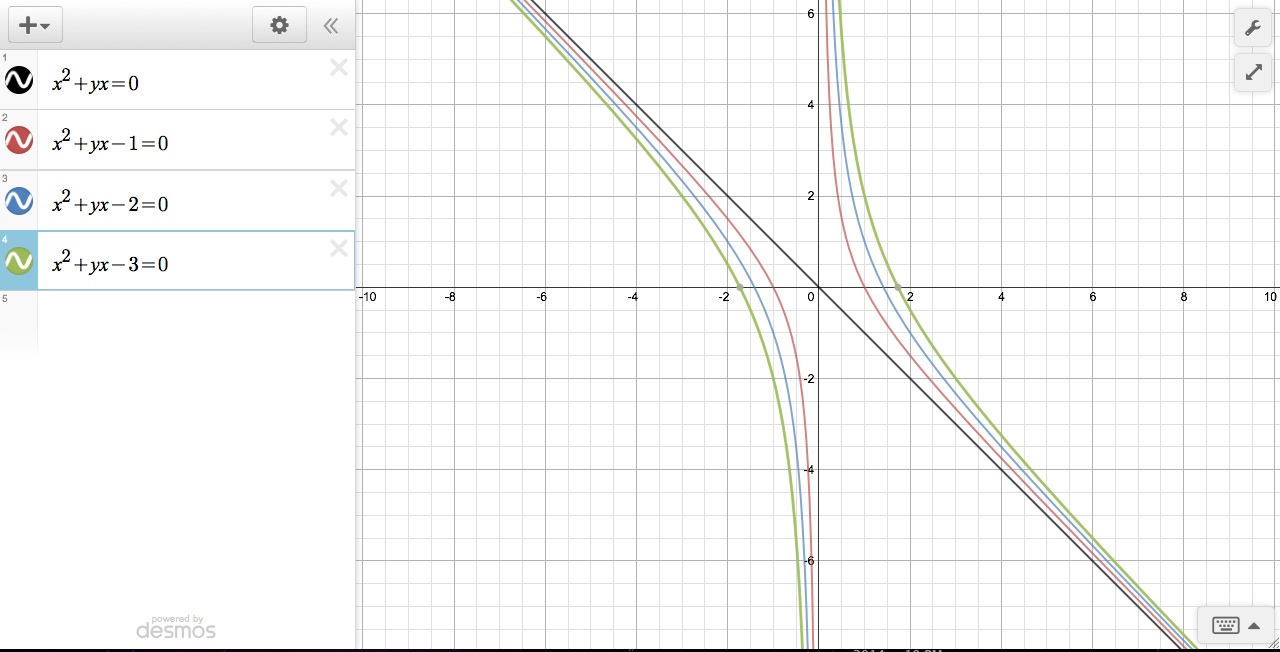
Digging for Roots
By: John Vereen

LetŐs
explore some different types of quadratic functions. We are going to first explore
function of the form x2+bx+1=0. However, we will be exploring these
functions in the x-b plane instead of the x-y plane. We will see how a varying c value affects the shape of each graph
on the x-b plane. As we can see above, the graphs have asymptotes at the b-axis
and at x=-b. Also, as |c| increases, the parabolas move further away from the
x-axis because the roots are becoming larger.

We have interesting results for the
roots of equations of the form x2+bx+1=0 when we set b equal to certain real values. There is
actually a method to finding roots that is non-algebraic and does not require
the quadratic formula. If we use a graph and draw a horizontal line at a
specific value for b, such as b=2, we will then we will see what values we have for b for the equation. There are three noteworthy findings from the
picture above.
1)
When
|b|<2, there is no real solution.
2)
When
|b|=2, there is exactly one real solution.
3)
When
|b|>2, there are two real solutions.

When we change the graph from x2+bx+1=0
to x2+bx-1=0. We see some striking differences in the two graphs.
Instead of the solution sets being on the interior of v-like shapes of the
asymptotes created by the b-axis and x=-b, the solution sets are on the
exterior. It also appears that there are always 2 solutions for b = the set of
real numbers instead of 0, 1, or 2 solutions.
So, what have we learned about the
set of solutions for x2+bx+1=0 and x2+bx-1=0. Well, if we
have the equation x2+bx+1=0, then we have the possibility
of 0, 1, or 2 real solutions. When |b|<2, there are no real solutions. When
|b|=2, there is exactly one real solution. When |b|>2, then there are
exactly two real solutions. Also, when we have x2+bx-1=0, then there
are always 2 real solutions to the equation.